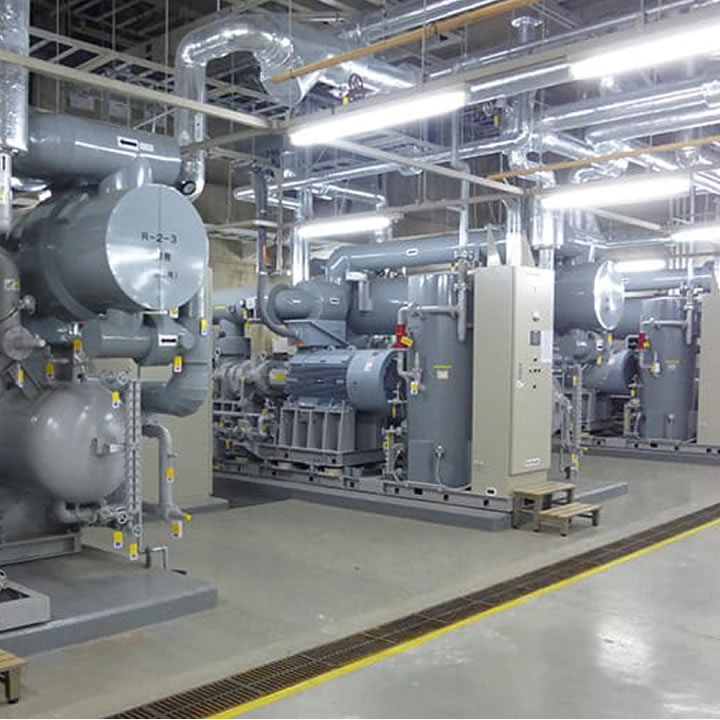There is a production of heat in almost every industrial process.
If left to accumulate, this by-product can cause inefficiency over time which could result in the underperformance of your machines and factory while also heating up too much to the point of shutdowns or early equipment breakdowns.
For this reason, it is paramount that we include cooling in our systems design to prevent such problems.
Brine or Water Chiller?
Industrial chillers generally use water as their coolant, however, in some cases, when the temperature needs to be considerably lower, brine is used as an alternative.
Used in central refrigeration installation to transport heat from one place to another its thermodynamic properties can be significantly modified by simply adding salt to the water.
Because the salinity lowers the freezing point of a solution, heat transport using brine can be greatly improved compared with the much higher cost of other materials.
What Are The Main Components of an Industrial Chiller?
A compressor, condenser, expansion valve, and evaporator are the basic elements of brine and water chillers. They work together by passing a refrigerant which removes heat from any given process, operation, or space.
Compressor: It is the most important part of any refrigeration system. In all chillers the compressors perform one function i.e., pumping around refrigerants (freon gasses). The gas should be pumped at high pressure into condensers where they will discharge their heat after being converted from a low-pressure gas state by these compressors.
Condenser: This component cools down gasses by transferring their heat outside through refrigerants toward air or water used for cooling purposes. It also acts as a place where gasses are condensed back into liquid form.
Expansion Valve: A liquid refrigerant passes through this part before entering an evaporator for exchange of heat with another substance. Its main duty is to reduce both pressure and temperature levels of liquidized freons when they pass via an expansion valve (also called a throttle valve).
Then the valve converts them into low pressures/temperatures wet vapors; which are subsequently sent into evaporators where exchanges take place with different substances.
Evaporator: This is the section where actual heat exchange occurs. Processed waters coming from expansion valves now enter evaporators to initiate heat exchange plus cooling procedures at this level.
Conclusion
Heat is released by industries in the form of friction or high-powered machines including but not limited to engines and furnaces, or materials that are sensitive to temperature like plastics.
For this reason, chiller units are used as they circulate cooled liquid through equipment to lengthen its lifespan while cutting on cycle time.
This will determine the type of chiller that best suits your needs; doing so would enable you to cut down on expenses, reduce idle time, and increase production volume alongside operational performance.

